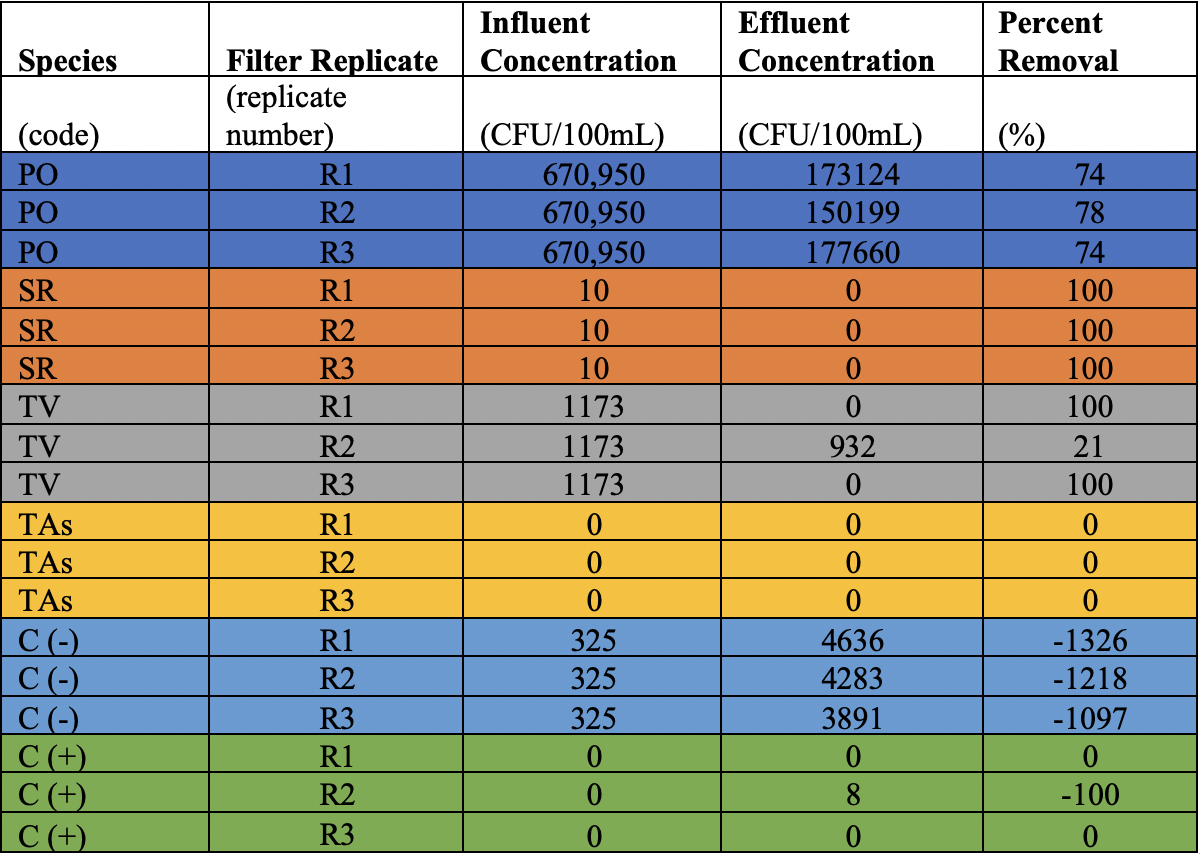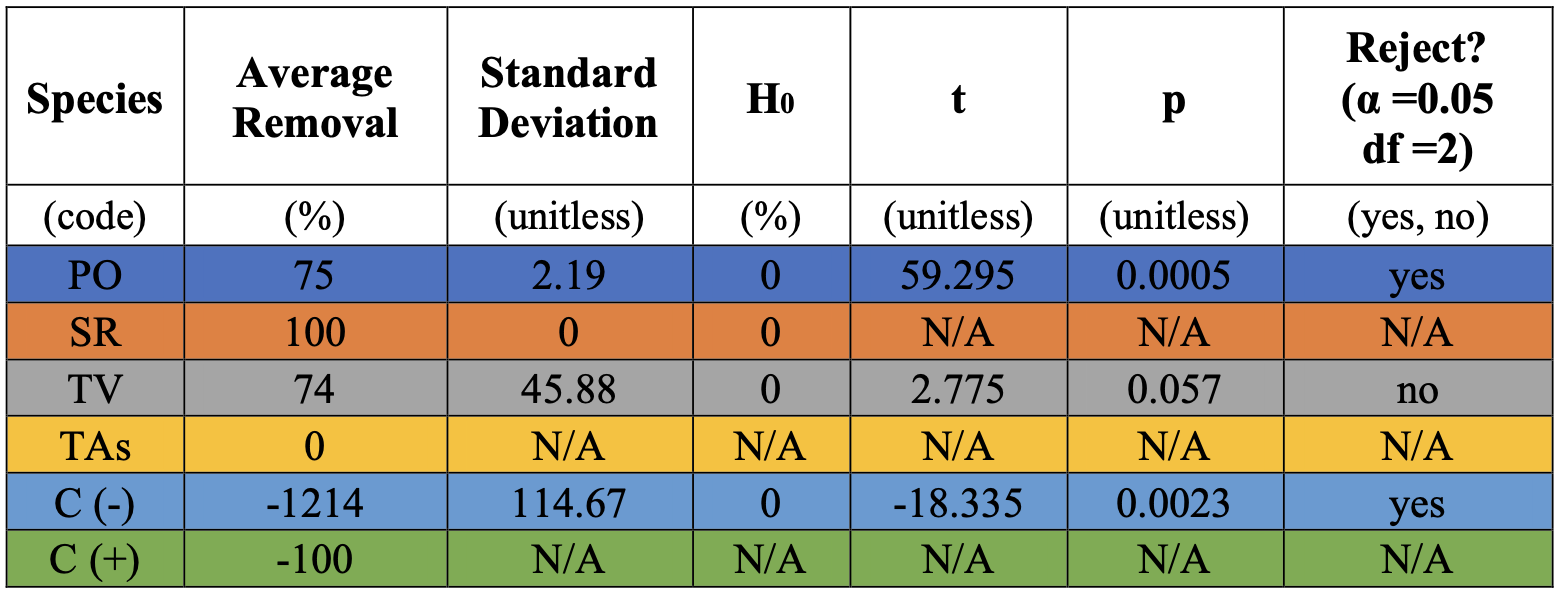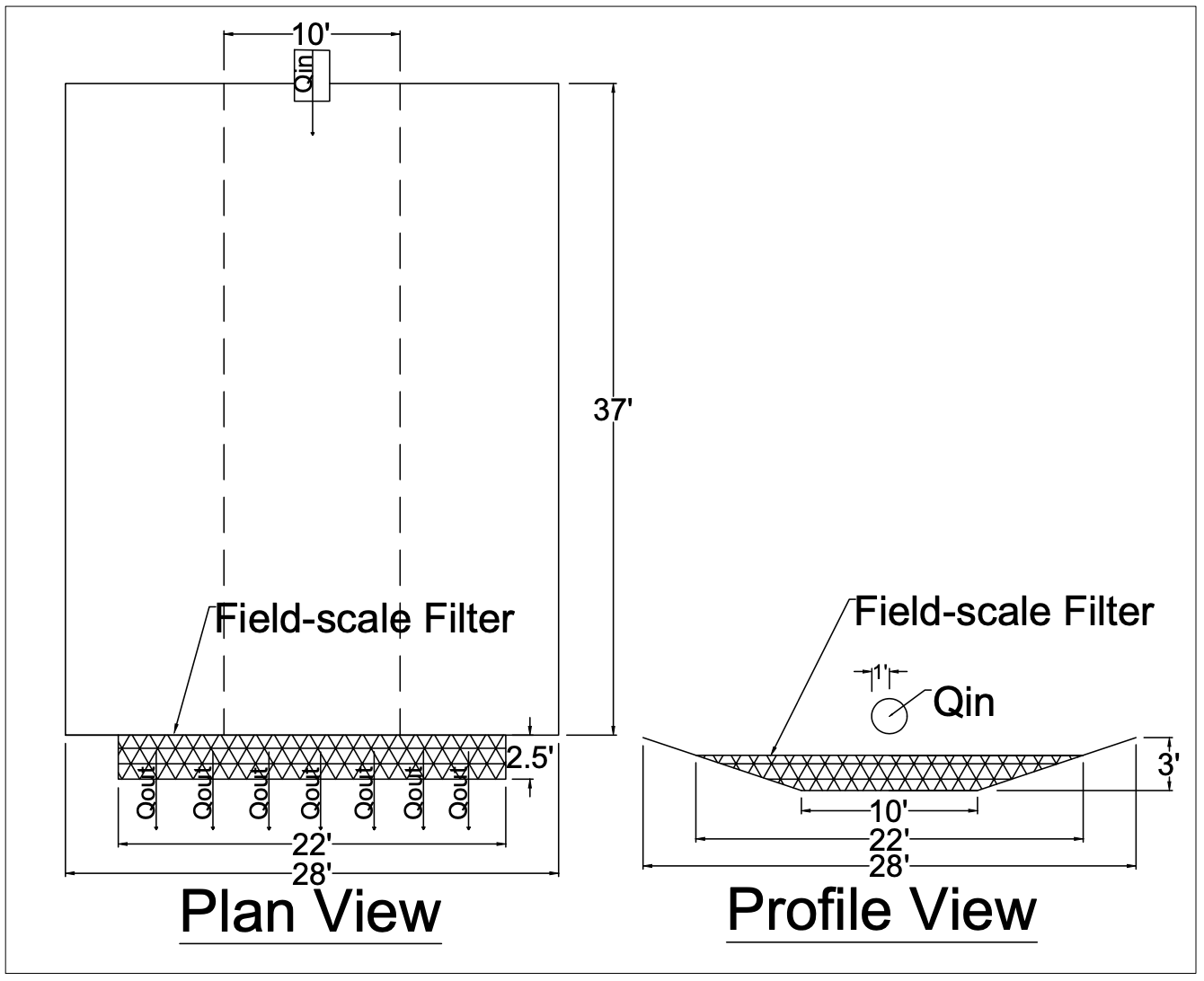Project Results & Conclusions
Last edited 5/5/2020
The table below shows the percent removal for each species of fungi tested. PO represents Pleurotus ostreatus, SR represents Stropharia rugosoannulata, TV represents Trametes versicolor, TAs represents Trichoderma asperellum, C (-) represents biofilters with just sterile media, and C (+) represents the control with dead fungal hyphae. Both control biofilters, C (-) and C (+), resulted in negative removal. This means that the Aspen woodchip media and dead fungal hyphae most likely were not contributing to E. coli removal in biofilters packed with live, fungal species.
Percent Removal Per Species Table

T-test statistical analysis was performed on the results, where the null hypothesis of no removal was checked using a predetermined type one error. Overall, based off the statsitical analysis below, Pleurotus ostreatus showed the highest percent removal with statistical significance. The Trametes versicolor species was very close to meeting the type one error and rejecting the null hypothesis, but not close enough. However, this species should be considered for future testing to verify its results. It is suspected that one of the Trametes versiscolor replicate biofilters began channeling flow, which could have reduced its removal efficiency. Species with "N/A" means that there was insufficient data to analyze their results with T-test analysis. Adequate data was only acquired for half of the data set. All biofilters were testing alike; however, a common problem encountered was achiving a standard influent concentration. E. coli proved to be more difficult to work with than expected. Therefore, only half of the species got tested with an adequate E. coli concentration in the synthetic wastewater. For example, Trichoderma asperellum received zero E. coli in its influent synthetic wastewater, therefore there was no E. coli available for testig removal capability. It is recommended that any future studies in the laboratory standardize their influent E. coli concetration methods completely prior to performing more testing. Additionally, another avenue for future research includes determining the mechanism(s) of removal which each fungal uses.
T-test Statistical Analysis Results Table

Using the best performing fungi and its test results, a field-scale conceptual design was made, as seen below. The flowrate and cross-sectional area of the Pleurotus Ostreatus biofilters were used to upscale the design. The design is meant to be applied for a point source, such as a storm drain or culvert, and incorporates a trapezoidal basin style. The hydraulic retention time of the upscael design is three times greater than what was found in lab, meaning the percent removal should be as good or better than lab scale findings.

Field-scale Conceptual Design, April 15, 2020, Drawn by: Mishael Umlor
The primary purpose of the field-scale conceptual design was to demonstrate how the best performing fungi could be implemented in the field, and give a ballpark cost estimate. The field-scale conceptual design was estimated to cost about $1,000 to $10,000 for supplies, cut/fill work and installation, and an additional annual operating cost of approximately $100 to $1,000. Again, this is a conceptual design, and actual implementation requires site specific analyses, such as hydrologic and hydraulic analyses. The field-scale design and costs will vary depending on incoming flowrate and overall basin size.
Conclusions
The main project objective was to quantify the capacity of four native Arizona fungi to remove E. coli from water using biofilters. While all four fungal species and control biofilters were tested, half of the results were rendered insufficient due to problems and errors. Of the testing which provided adequate results, one fungi, Pleurotus ostreatus, proved to be a good option for future fungal bioremediation projects. Many avenues for future research were identified, including starting with retesting species which did not have enough data from this study.